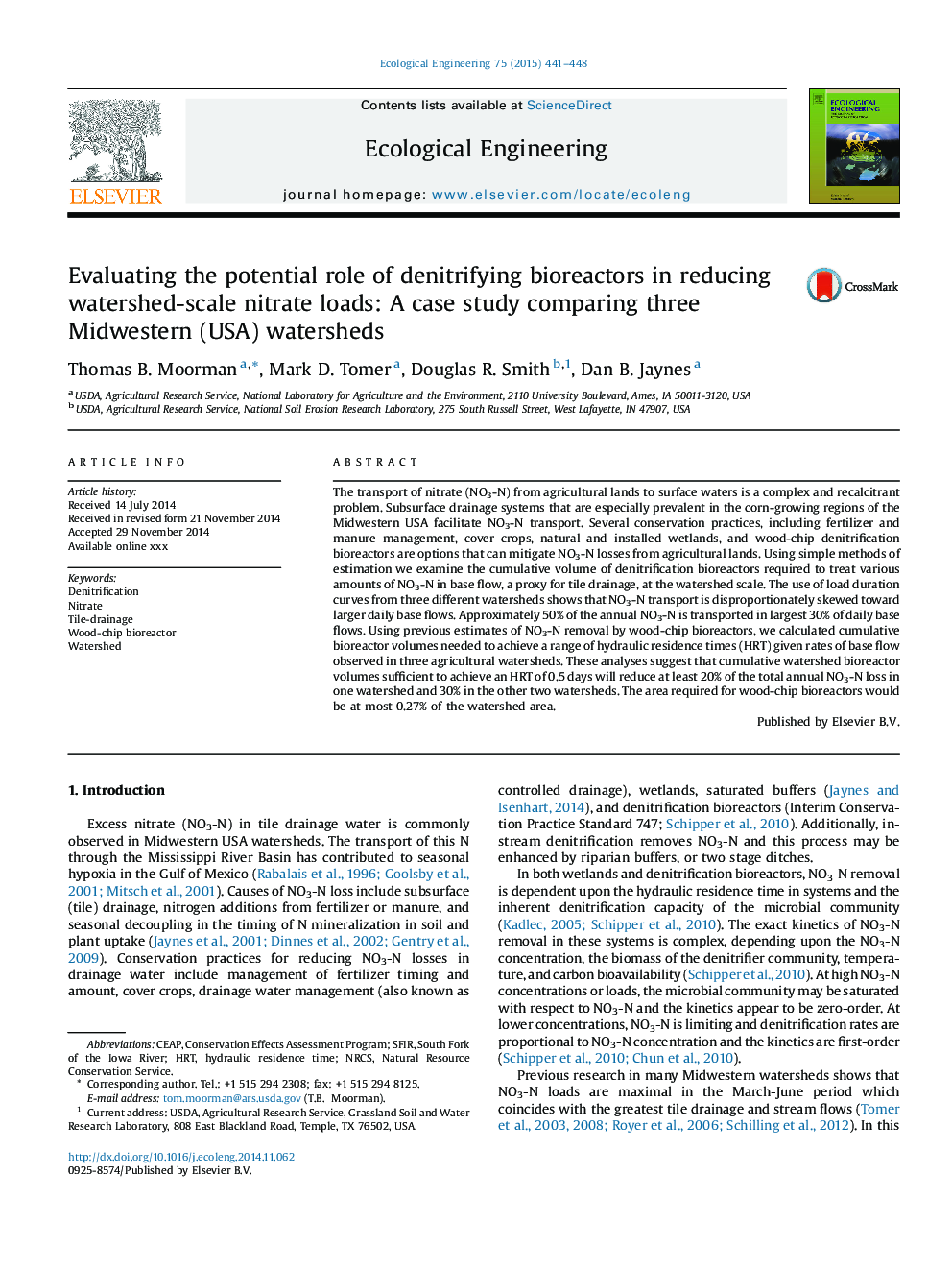| Article ID | Journal | Published Year | Pages | File Type |
|---|---|---|---|---|
| 6301775 | Ecological Engineering | 2015 | 8 Pages |
Abstract
The transport of nitrate (NO3-N) from agricultural lands to surface waters is a complex and recalcitrant problem. Subsurface drainage systems that are especially prevalent in the corn-growing regions of the Midwestern USA facilitate NO3-N transport. Several conservation practices, including fertilizer and manure management, cover crops, natural and installed wetlands, and wood-chip denitrification bioreactors are options that can mitigate NO3-N losses from agricultural lands. Using simple methods of estimation we examine the cumulative volume of denitrification bioreactors required to treat various amounts of NO3-N in base flow, a proxy for tile drainage, at the watershed scale. The use of load duration curves from three different watersheds shows that NO3-N transport is disproportionately skewed toward larger daily base flows. Approximately 50% of the annual NO3-N is transported in largest 30% of daily base flows. Using previous estimates of NO3-N removal by wood-chip bioreactors, we calculated cumulative bioreactor volumes needed to achieve a range of hydraulic residence times (HRT) given rates of base flow observed in three agricultural watersheds. These analyses suggest that cumulative watershed bioreactor volumes sufficient to achieve an HRT of 0.5 days will reduce at least 20% of the total annual NO3-N loss in one watershed and 30% in the other two watersheds. The area required for wood-chip bioreactors would be at most 0.27% of the watershed area.
Keywords
Related Topics
Life Sciences
Agricultural and Biological Sciences
Ecology, Evolution, Behavior and Systematics
Authors
Thomas B. Moorman, Mark D. Tomer, Douglas R. Smith, Dan B. Jaynes,
